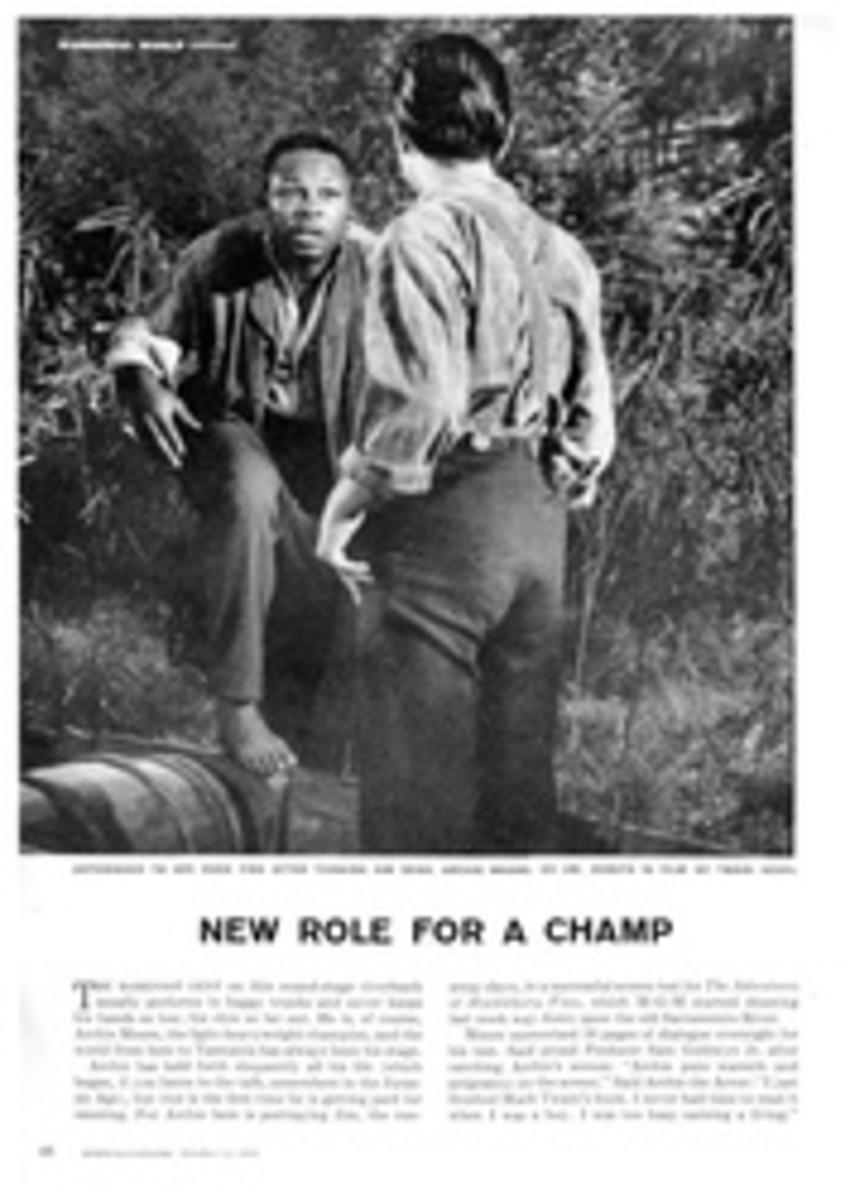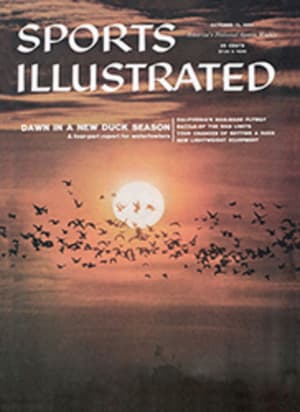
THE BATTLE OF THE BAG LIMITS
A fierce storm of protest has been raised by gunners on all flyways against the 1959 waterfowl regulations—the most sweeping changes in the past decade, mostly the result of the Canadian drought. Season-length cutbacks of 20 days on the Atlantic and Central flyways and 30 days on the Mississippi flyway have disgruntled waterfowlers; and Pacific Coast flyway gunners, although they lose but one shooting day, are outraged by any restrictions. The severity of this national discord was expressed last week by Parker Smith, U.S. Fish and Wildlife official in Atlanta. "I guess we are the nerve center of the biggest outdoor bellyache in the history of the Atlantic seaboard," Smith said. "From the tremendous and continuous clamor of complaints that have poured in from hunters, I believe we would have been far better off to discontinue the 1959 season altogether, rather than to reduce the bag limits and shooting days so drastically."
Ducks Unlimited officials estimate that the national waterfowl average will be down 20% over-all. For your chances of killing a duck this year, see the flyway breakdown below.
PACIFIC FLYWAY
West Coast gunners are making the loudest protest against the new limitations. They contend that any regulation that goes beyond those in effect for the past decade is unfair. Surveys held by the federal government and the U.S. Fish and Wildlife Service, as well as our own, do not bear this out 100%.
Birds feeding the Pacific flyway hail from regions generally not affected by the drought which has blighted the breeding areas for waterfowl across much of Canada. A major portion of their birds come from Alaska, western Alberta, and the Northwest Territory—areas which stayed wet during the nesting season. However, the all-important factor of bonus birds for hunters in that region is being overlooked. The bonus bird for the Pacific flyway, is the sprig, or pintail, a species whose nesting grounds were in good part devastated. Their numbers will be sharply down this season as opposed to last. Both federal and state officials feel that heavy shooting pressure on these birds could do immeasurable harm to the future supply.
As of October 1, Tule Lake and Lower Klamath refuges, two of the major stopover points for southbound birds on the Pacific flyway, were indicated by aerial survey to hold 3,919,000 birds. Although this figure may seem impressive, it is still approximately one and a half million birds less than these same areas held last year.
The Pacific coast situation, with the sprig down while other birds have held static, is by no means as desperate as that of other regions, with shooting outlook good.
OVER-ALL TOTAL: DOWN: 5%
CENTRAL FLYWAY
The Central faces what may be its slowest season in many years. Two of its major birds, the mallard and pintail, were drastically reduced by the drought in the Canadian breeding grounds. Returning birds, heading up from the southern wintering grounds to the prairie provinces of Alberta, Manitoba and Saskatchewan, ran into barren mud flats and dust bowls where potholes had once held promise of food and cover. Moving farther north, these early arrivals established a breeding claim to the restricted wet land of the upper sections, leaving latecomers with no alternative but to remigrate to the deep-water lake country to the south—a shift never before recorded in waterfowl conservation history. There they took up residence through the months of May and June, until a lifesaving rain filled the potholes again. The end result was a late hatch and a small one. Had the rains not come in June there would have been no hatch at all. In New Mexico the count of birds was higher than that of last year, but officials feel, perhaps correctly, that these birds did not migrate.
With all the facts at hand, the best forecast for the Central flyway is poor.
OVER-ALL TOTAL: DOWN 25%
MISSISSIPPI FLYWAY
The Mississippi flyway stands to be the hardest hit of all the areas. Catering as it does, both by geographic location and feeding facilities, to puddle ducks rather than diving species, this flyway suffered a severe setback in bird count, with the late-hatching broods in the lower provinces crossing the border in pinfeathers.
Mallard and pintail make up a good percentage of the shooting available to gunners in the states fed by the Mississippi flyway. These two species, along with two diving ducks (canvasback and redhead), were the principal drought victims of the Canadian provinces this past spring. The divers, restricted last year, had limits cut to one of either species.
Although gunners in this area do not subscribe to the slashes in their season and bag limits, the facts seem to be against them. In fact, at one point there was considerable doubt on the part of wildlife observers in the province regions that the young birds would be in feather and able to fly at all by the time the ice and snow of an early winter set in.
OVER-ALL TOTAL: DOWN 40%
ATLANTIC FLYWAY
Gunners on the Eastern seaboard have a curious season ahead of them. Faced, as are their contemporaries on the remaining flight paths, with drastic cutbacks in season rather than in bags, they still can point with some justice to the possibility that this year may be better than last.
Last year a near-disastrous million-bird drop in the transient waterfowl along the Atlantic flyway gave observers reason to fear an even worse reduction this year. Unlike other flyway habitants, the species using the Atlantic route follow the same pattern every year. Fewer birds this year would spell lasting danger. But aerial surveys and on-the-spot bird counts in key regions indicate that the Maritimes—a section of Canada normally not considered as a huge reserve of waterfowl—came forward to partially offset the drought in the customary breeding regions. A certain amount of refugees filtered into this region—birds moving with the water. These immigrants combined with the normal population and, enjoying normal water levels and food, produced a better-than-average hatch and assured gunners on the Atlantic coast birds for sport this year. But this fact has been greeted with more complaint than acclamation because of cutbacks few felt were necessary.
While complaints may be out of order in other areas, they have a better-than-reasonable basis in the East. Canvasback, thanks to the Maritimes and Ontario, are up, but gunners are limited to one daily. Scaup, regular Atlantic transients, are up. Black ducks, normally fair in some years, are good. Mallard are up over past seasons.
OVER-ALL OUTLOOK: UP 5%

